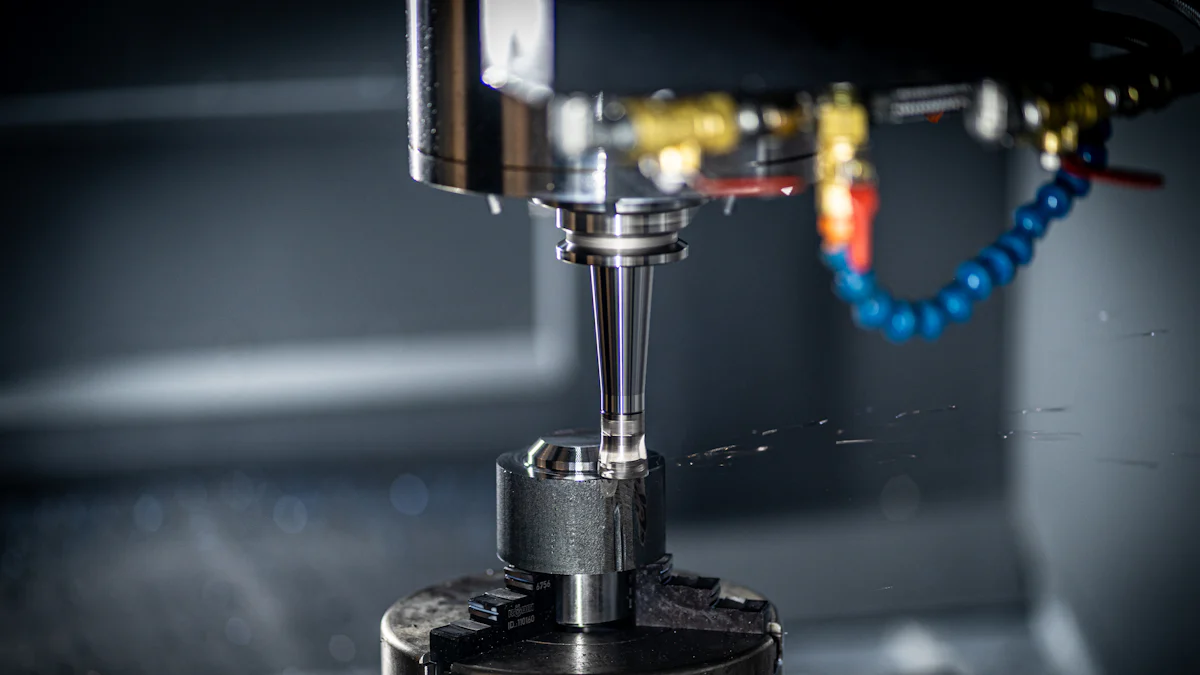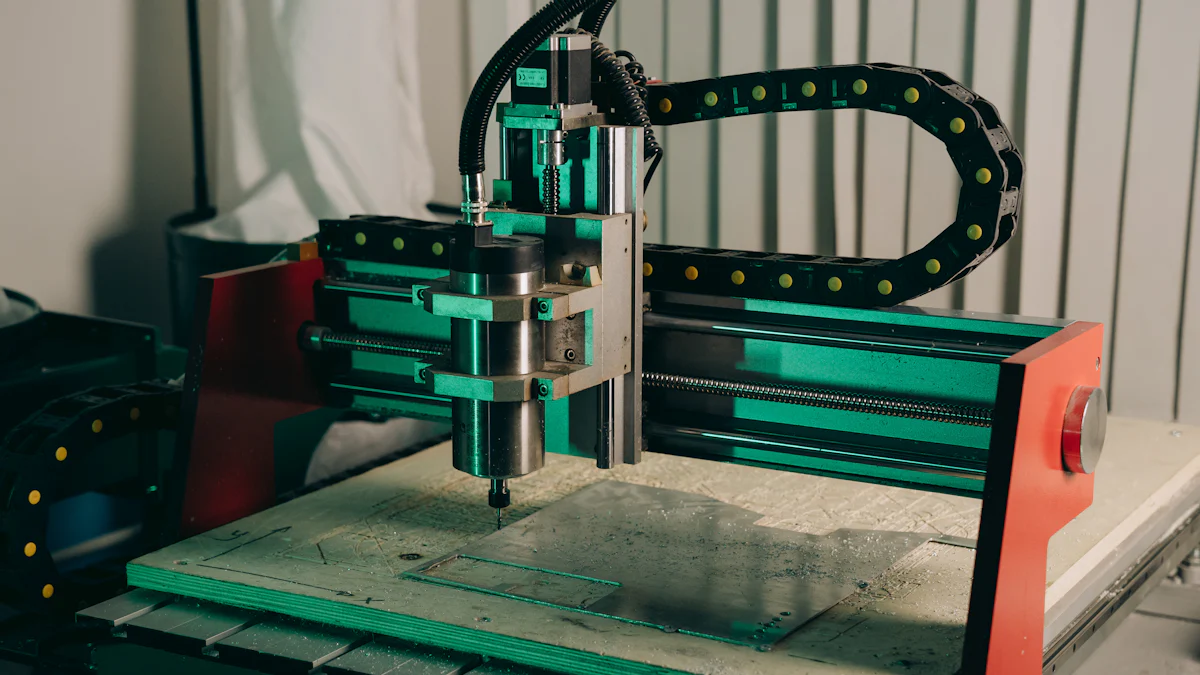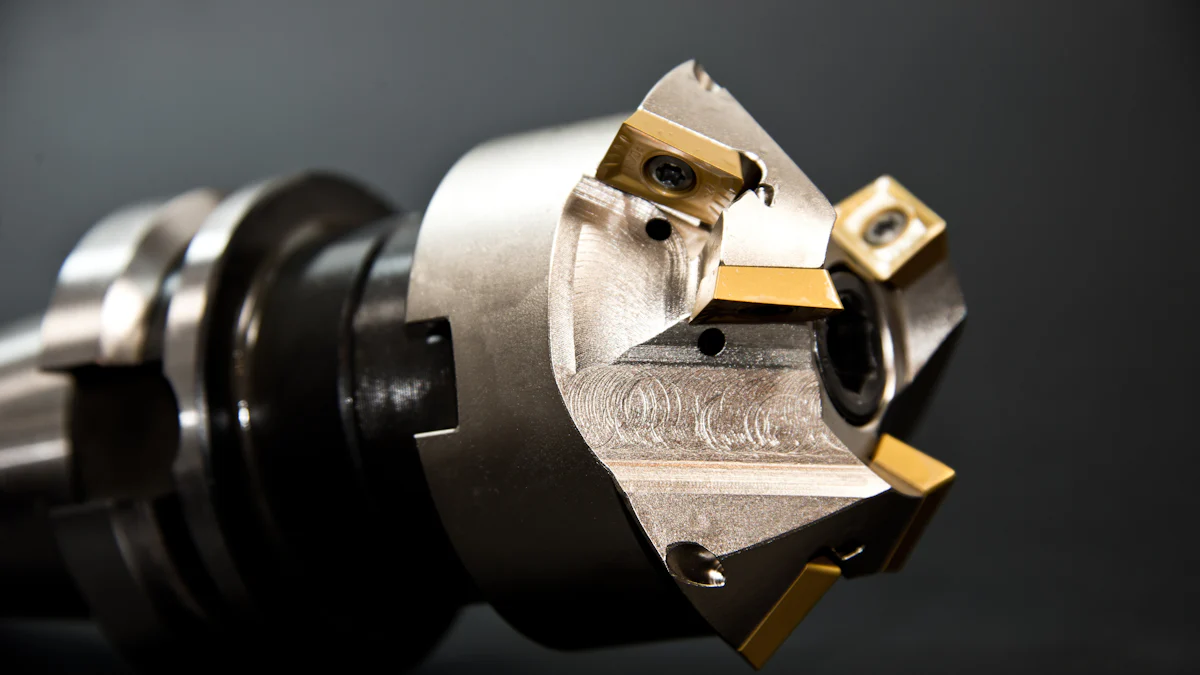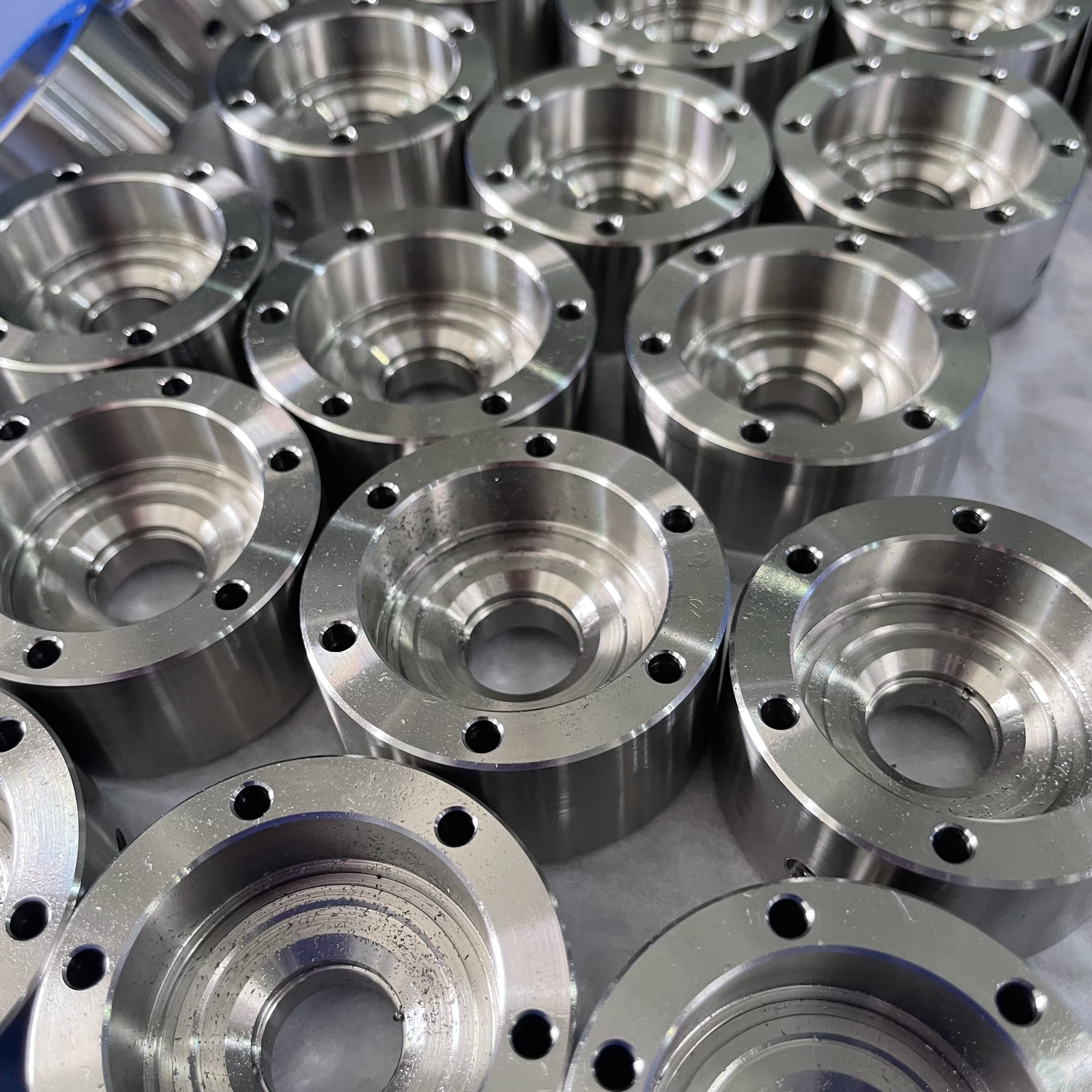CNC 5-Axis: A Comprehensive Definition

CNC technology has revolutionized manufacturing by automating complex machining tasks. Among its innovations, CNC 5-axis machining stands out for its transformative impact on modern production. This advanced CNC technology allows tools to move simultaneously around five axes, enhancing precision and efficiency. The market for CNC 5-axis machines is projected to grow significantly, with an expected CAGR of around 7-9% by 2030. Key advancements, such as automation and IoT integration, drive this growth, making CNC 5-axis machines indispensable in industries like aerospace and automotive.
Understanding CNC 5-Axis

Definition and Basic Concepts
What is CNC?
CNC, or Computer Numerical Control, refers to the automated control of machining tools by means of a computer. This technology allows for precise control over complex machining tasks, revolutionizing manufacturing processes. CNC machines operate based on pre-programmed sequences of machine control commands, enabling them to produce intricate parts with high accuracy.
Overview of 5-Axis Machining
7 5-axis machining represents a significant advancement in CNC technology. Unlike traditional 3-axis machines, which move along the X, Y, and Z axes, CNC 5-axis machines can rotate on two additional axes, known as A and B. This capability allows the cutting tool to approach the part from virtually any direction, enhancing precision and efficiency. The ability to perform simultaneous movements across five axes makes CNC 5-axis machines ideal for creating complex geometries and intricate designs.
Historical Development
Evolution of CNC Machines
The evolution of CNC machines began in the 1940s and 1950s. During this period, the introduction of numerical control laid the foundation for a monumental shift in manufacturing processes. By the 1960s, the integration of computers marked a leap in machining capabilities, transitioning from punched tape to digital control. This advancement enabled higher production rates and increased precision, paving the way for modern CNC technology.
Introduction of 5-Axis Technology
12 The development of 5-axis machining dates back to the early days of CNC technology. As CNC machines evolved, the demand for more complex and precise parts grew, particularly in industries like aerospace and automotive. The introduction of 5-axis technology addressed these demands by allowing for faster and more accurate production of intricate components. Over time, advancements in computing capabilities further enhanced CNC technology, giving rise to a broader range of manufacturing possibilities, including the invention of 5-axis and even 7-axis CNC machines.
Benefits of 5-Axis Machining

Enhanced Precision and Accuracy
CNC 5-axis machining significantly enhances precision and accuracy in manufacturing processes. This advanced technology allows for the creation of intricate parts with minimal error, which is crucial in industries requiring high precision, such as aerospace and medical equipment.
Reduction in Setup Time
One of the standout benefits of CNC 5-axis machining is the reduction in setup time. Traditional methods often require multiple setups to achieve the desired outcome. However, CNC 5-axis machines can handle complex geometries in a single setup. This capability not only saves time but also reduces the potential for human error during manual repositioning.
Improved Surface Finish
CNC 5-axis machines also contribute to improved surface finishes. The ability to approach the workpiece from various angles ensures a smoother and more consistent finish. This is particularly beneficial for components that demand a high-quality surface, such as those used in the automotive and aerospace sectors. The enhanced surface finish reduces the need for additional post-processing, further streamlining production.
Increased Flexibility and Efficiency
CNC 5-axis machining offers unparalleled flexibility and efficiency, making it an indispensable tool in modern manufacturing.
Complex Geometries
The ability to execute complex cuts from multiple angles allows CNC 5-axis machines to handle intricate geometries with ease. This flexibility is essential for producing components with sophisticated designs that would be challenging or impossible with traditional 3-axis machines. The capability to create complex shapes efficiently opens up new possibilities in design and innovation.
Reduced Tool Wear
CNC 5-axis machines also help in reducing tool wear. By allowing shorter cutting tools and faster cutting speeds, these machines minimize tool vibration and extend tool life. This not only results in cost savings on tooling but also ensures consistent quality over longer production runs. The reduced need for multiple setups and tool changes further enhances productivity and efficiency.
Capabilities of 5-Axis Machines
Range of Motion
5-axis CNC machines offer an impressive range of motion, allowing for intricate and precise machining.
Simultaneous Movement
These machines can move the tool along five different axes simultaneously. This capability enables the creation of complex parts with high precision. By accessing difficult-to-reach surfaces, 5-axis machines eliminate the need for multiple setups, enhancing efficiency and reducing production time.
Multi-Directional Machining
The ability to approach the workpiece from various angles allows for multi-directional machining. This flexibility is crucial for crafting intricate three-dimensional shapes and designs. It simplifies the fabrication process, making it possible to produce sophisticated components in a single setup.
Material Versatility
5-axis CNC machines excel in handling a wide range of materials, making them indispensable in various industries.
Metals
These machines can work with numerous metals, including high-temperature alloys like tool steel, carbon steel, and stainless steel. The precision and efficiency of 5-axis machining ensure high-quality results, even with challenging materials.
Composites and Plastics
In addition to metals, 5-axis machines can handle composites and plastics. This versatility allows manufacturers to produce parts for diverse applications, from aerospace to medical devices. The ability to work with different materials without sacrificing accuracy or quality makes 5-axis CNC machines a valuable asset in modern manufacturing.
Complexity Levels in 5-Axis Machining
Programming Challenges
5-axis machining introduces unique programming challenges. The complexity of controlling five simultaneous axes requires advanced software solutions. Operators must ensure precise tool paths to achieve the desired outcomes.
Software Requirements
Software for 5-axis machines must handle intricate calculations. It needs to generate accurate tool paths that consider the machine's full range of motion. This software often includes features for collision detection and simulation, ensuring safe and efficient operations.
Operator Expertise
Operators play a crucial role in 5-axis machining. They must possess a deep understanding of both the software and the machine's capabilities. Skilled operators can optimize processes, reducing errors and enhancing productivity. Continuous training ensures they stay updated with technological advancements.
Machine Setup and Calibration
Proper setup and calibration are vital for successful 5-axis machining. These steps ensure the machine operates at peak efficiency and accuracy.
Tool Path Optimization
Optimizing tool paths minimizes machining time and enhances precision. Operators must carefully plan the sequence of operations to reduce unnecessary movements. This optimization leads to faster production and improved surface finishes.
Fixture Design
Fixture design is essential in 5-axis machining. It secures the workpiece, allowing for precise cuts from multiple angles. Well-designed fixtures reduce setup time and increase repeatability, contributing to overall efficiency.
Future Trends and Innovations
Technological Advancements
Automation and AI Integration
The integration of automation and artificial intelligence (AI) in CNC 5-axis machining represents a significant leap forward. Automation reduces manual intervention, leading to faster production cycles and consistent quality. AI enhances decision-making by analyzing data and optimizing machining processes. This combination allows manufacturers to achieve higher precision and efficiency. Industry experts emphasize that these advancements meet the growing demand for complex geometries and efficiency in manufacturing. They predict that future developments will focus on reducing setup times and improving productivity.
Enhanced Connectivity
Enhanced connectivity in CNC technology facilitates remote monitoring and control of machining processes. This capability allows operators to oversee operations from anywhere, ensuring timely interventions and adjustments. Connectivity also supports data sharing across different systems, promoting seamless integration and collaboration. Experts highlight that this trend addresses challenges like skilled labor shortages by enabling remote training and support. Manufacturers are increasingly adopting modular and scalable designs to reduce costs and enhance accessibility, driving growth in the CNC 5-axis market.
Industry Applications
Aerospace
In the aerospace industry, CNC 5-axis machines play a crucial role in producing complex components with high precision. The ability to create intricate parts efficiently makes these machines indispensable for aerospace manufacturers. They can produce lightweight yet strong components, essential for modern aircraft design. Industry experts note that the demand for precision manufacturing in aerospace continues to propel the CNC 5-axis market. The technology's ability to handle complex geometries and maintain quality standards makes it a preferred choice in this sector.
Automotive
The automotive industry benefits significantly from CNC 5-axis machining. These machines enable the production of complex parts required for modern vehicles, such as engine components and intricate body parts. The technology's precision and efficiency contribute to faster turnaround times without compromising quality. Experts assert that advancements in CNC technology, including automation and enhanced connectivity, drive its adoption in the automotive sector. As manufacturers seek to improve efficiency and output, CNC 5-axis machines offer a viable solution to meet these demands.
CNC 5-axis machining has revolutionized modern manufacturing by enabling the creation of complex parts with superior precision. This technology's ability to move along five axes simultaneously has made it indispensable in industries like aerospace and automotive. As advancements in software and technology continue, CNC 5-axis machines are becoming more affordable and user-friendly, opening up new production possibilities. The future of CNC 5-axis technology looks promising, with a focus on reducing setup times and improving productivity. Emerging opportunities in various industries will further drive the adoption of this transformative technology.
See Also
A Beginner's Comprehensive Guide to CNC Technology
5 Crucial Uses of CNC Technology You Should Understand
An In-depth Look at CNC Milling: Precision Engineering Overview
Decoding CNC Precision Machining: An Insight into CNC Turning
About US
Follow Us
Your prototype holds unparalleled significance, and we deeply value its uniqueness. Collaborating with you during the preparation phase for running your prototype or parts is a commitment we gladly embrace. Whether it's a single part or a complex assembly, we are dedicated to selecting the optimal tools and pathways to bring your envisioned product to life.
At Precision Fab CNC Machining, we specialize in producing parts for prototypes, short runs, and high-volume production. Our prototyping machine capabilities extend across metal, plastic, and wood machining, with welding fabrication services available to complement and finalize your prototype if required.
Address
Address: Room320 10F, Building A,Nanshan international building, Dayawan District, Huizhou, Guangdong, 516001 China
Contacts
billy@timaycnc.com

